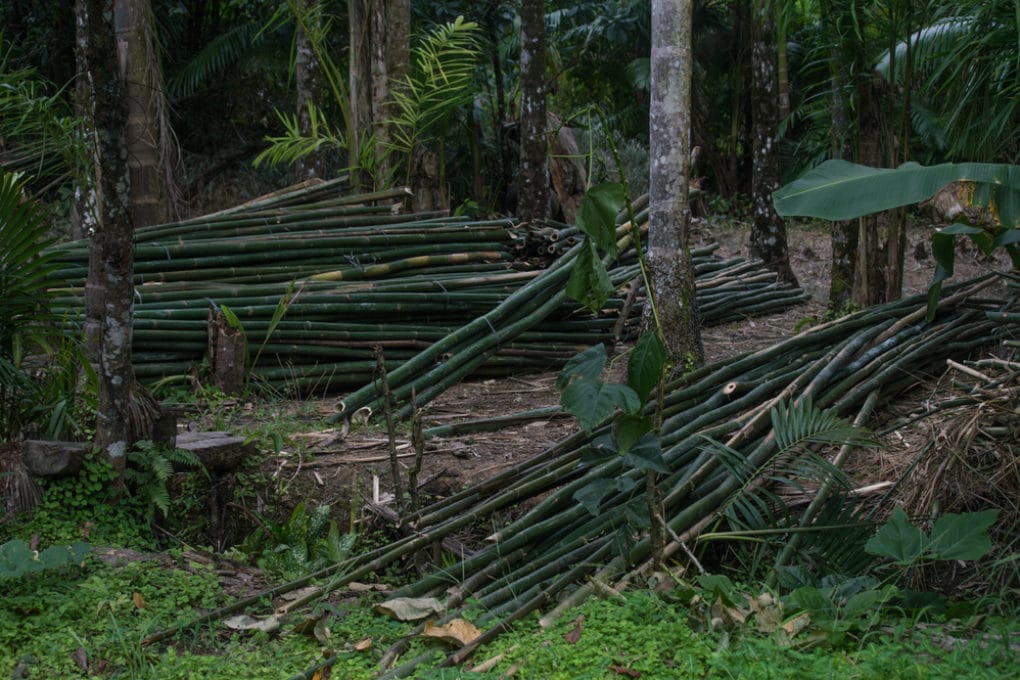Bamboo is a versatile and beautiful plant, but its aggressive growth can quickly turn it into an invasive problem in your garden. If you're looking for the best way to kill bamboo, you've come to the right place. This guide will provide you with actionable insights and techniques to manage and eradicate bamboo effectively.
Understanding bamboo's behavior and its resilient root system is crucial when planning its removal. Whether you're dealing with running bamboo or clumping bamboo, this guide will cover both chemical and non-chemical methods to ensure success.
By the end of this article, you'll have a clear understanding of the best strategies to kill bamboo without damaging your surrounding landscape. Let’s dive into the details to help you reclaim your garden space!
Read also:Sophi Rain Erome The Rising Star Of The Entertainment Industry
Table of Contents
- Introduction
- Types of Bamboo
- Why Remove Bamboo?
- Natural Methods to Kill Bamboo
- Chemical Methods for Bamboo Removal
- Tools You'll Need
- Step-by-Step Guide to Bamboo Removal
- Prevention Tips
- Common Mistakes to Avoid
- Conclusion
Types of Bamboo
Before diving into the best way to kill bamboo, it's essential to understand the different types of bamboo. There are primarily two categories: running bamboo and clumping bamboo.
Running Bamboo
Running bamboo spreads aggressively through underground rhizomes, making it more challenging to control. This type of bamboo can quickly invade neighboring areas if not contained properly.
Clumping Bamboo
Clumping bamboo grows in tight clusters and is less invasive than running bamboo. However, it still requires regular maintenance to prevent overgrowth.
Why Remove Bamboo?
While bamboo has its aesthetic appeal, there are several reasons why you might want to remove it:
- Invasive growth patterns that disrupt gardens and landscapes.
- Damage to property foundations and structures.
- Competition with other plants for nutrients and sunlight.
Removing bamboo can help restore balance to your garden and prevent further damage.
Natural Methods to Kill Bamboo
If you prefer a chemical-free approach, here are some natural methods to kill bamboo:
Read also:Erome Sophie Rain The Rising Star In The Digital World
Cutting and Digging
This method involves repeatedly cutting the bamboo shoots at ground level and digging out the root system. While labor-intensive, it ensures complete removal over time.
Mulching
Applying a thick layer of mulch around the bamboo can smother the plants and prevent sunlight from reaching the roots, eventually killing them.
Solarization
Covering the bamboo with plastic sheeting traps heat and prevents sunlight exposure, effectively killing the plants. This method works best during hot summer months.
Chemical Methods for Bamboo Removal
For faster results, chemical herbicides can be used to kill bamboo. Here are some effective options:
Glyphosate-Based Herbicides
Glyphosate is a widely used herbicide that targets the bamboo's vascular system, killing it from the roots up. Apply the herbicide directly to freshly cut shoots for optimal results.
Triclopyr Herbicides
Triclopyr is another effective chemical that works well on woody plants like bamboo. It disrupts the plant's hormonal balance, leading to its death.
Tools You'll Need
Regardless of the method you choose, having the right tools is essential for successful bamboo removal:
- Loppers or pruning shears
- Shovel or spade
- Gloves for protection
- Herbicide applicator
Investing in quality tools will make the process easier and more efficient.
Step-by-Step Guide to Bamboo Removal
Follow these steps to effectively remove bamboo from your property:
Step 1: Identify the Bamboo Type
Determine whether you're dealing with running or clumping bamboo, as this will influence your removal strategy.
Step 2: Cut Down the Bamboo
Use loppers or a saw to cut the bamboo shoots as close to the ground as possible. This weakens the plant and prepares it for further treatment.
Step 3: Apply Herbicide
Apply a glyphosate or triclopyr-based herbicide to the freshly cut stems. This ensures the chemicals reach the root system.
Step 4: Dig Out the Roots
Excavate the bamboo's rhizome system using a shovel or spade. Removing the roots is crucial to prevent regrowth.
Prevention Tips
Once you've successfully removed bamboo, take steps to prevent it from returning:
- Install a bamboo barrier around the area to contain any remaining rhizomes.
- Regularly monitor the area for new shoots and remove them immediately.
- Plant alternative, non-invasive species in the cleared space.
Common Mistakes to Avoid
Here are some common mistakes to avoid when removing bamboo:
- Not cutting the bamboo close enough to the ground.
- Forgetting to treat the roots with herbicide.
- Ignoring the importance of digging out the rhizome system.
Avoiding these pitfalls will increase your chances of successful bamboo removal.
Conclusion
Removing bamboo requires patience and persistence, but with the right approach, it can be done effectively. Whether you choose natural methods or chemical treatments, understanding the best way to kill bamboo is key to reclaiming your garden space.
We encourage you to share this article with others who may be struggling with bamboo problems. Feel free to leave a comment below with any questions or additional tips you might have. Together, we can help each other maintain beautiful, bamboo-free landscapes!
For further reading, check out our other articles on garden maintenance and pest control. Thank you for visiting, and happy gardening!
Data and references:
- University of Florida IFAS Extension - Bamboo Management
- USDA Plant Guide - Bamboo



